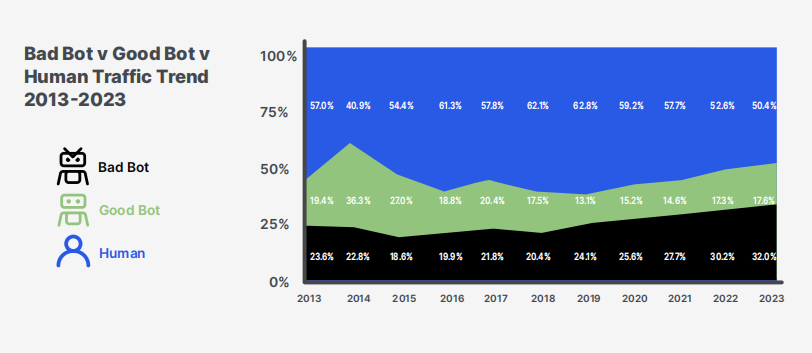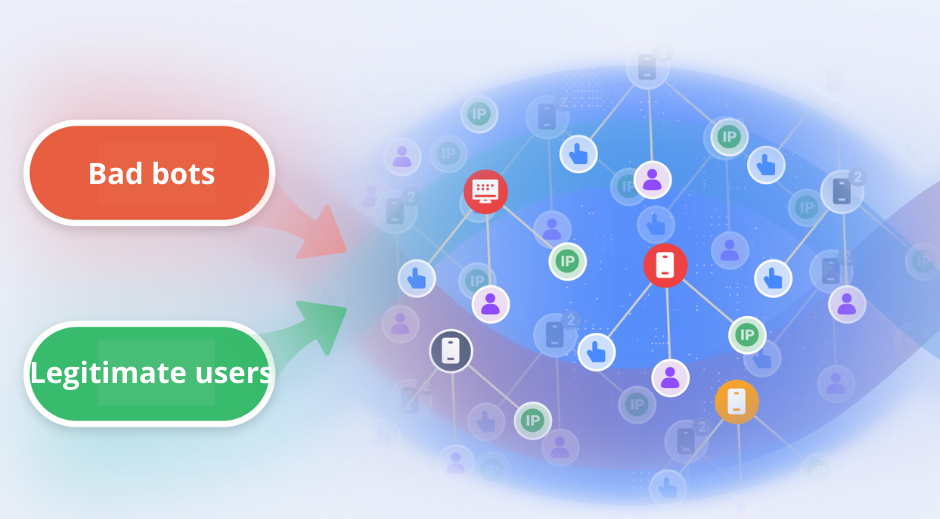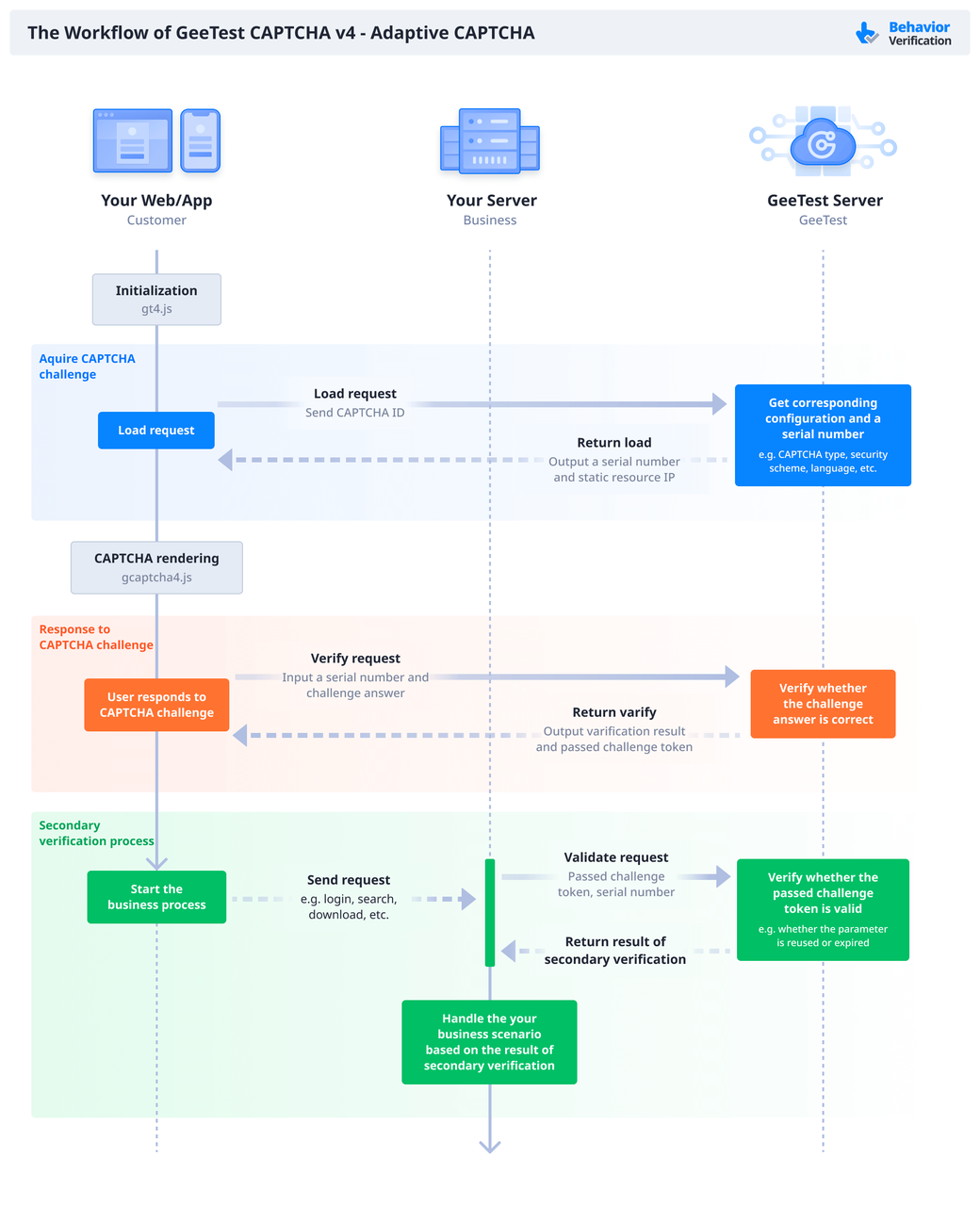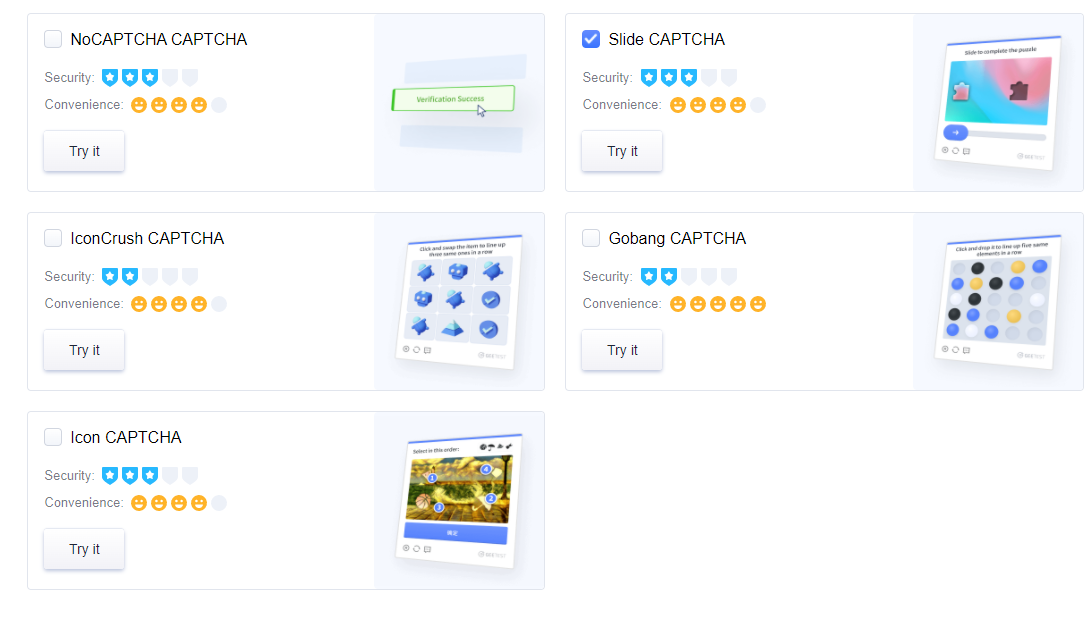Blocking Traffic Bots: Protect Business from Fraudulent Traffic
14 Mar 2025 • 10 min read
Blocking Traffic Bots: Protect Business from Fraudulent Traffic
14 Mar 2025 • 10 min read
Successful digital marketing relies on two key principles: driving high-quality traffic to your website and converting traffic into customers. However, in this process, traffic bots have become a significant threat that businesses cannot ignore. These automated programs mimic human behavior to generate fake traffic for websites and social media accounts, misleading businesses' traffic analytics and marketing strategies.
According to the Imperva 2024 Bad Bot Report, nearly 50% of internet traffic originates from non-human sources. Malicious bots, in particular, now account for almost one-third of all internet traffic.

The presence of traffic bots not only increases operational costs for businesses but can also cause irreparable damage to their reputation and brand image. Therefore, understanding and effectively mitigating traffic bots is crucial to protecting businesses from fraudulent traffic and its adverse impacts.
Bot vs. Real Human Traffic
Bot Traffic
Bot traffic refers to non-human traffic generated by automated software programs, or "bots." These bots can perform various tasks without human intervention.
Types
- Good Bots: These bots are beneficial and often used for legitimate purposes. Examples include search engine crawlers, like Googlebot, that index and rank web pages.
- Bad Bots: Malicious bots can cause problems. Scrapers copy content without permission, leading to intellectual property theft. Spam bots create and distribute spam content, such as phishing emails and fake social media accounts, compromising online security. DDoS (Distributed Denial-of-Service) bots aim to overwhelm servers, preventing access to websites and causing downtime and financial losses.
Characteristics
- Bot traffic is not valuable in terms of conversions or revenue, as bots do not engage in purchasing behavior or other interactive activities that generate business value.
- Bots can be identified through their distinct patterns of behavior, such as rapid page visits or unusual traffic spikes.
Real Human Traffic
Real human traffic refers to visits to websites and apps by genuine users. This type of traffic is highly valuable as it represents potential customers, engaged users, or audiences who can interact with content, make purchases, and drive business growth. Human interactions offer actionable insights, enabling businesses to refine website design, optimize content, and enhance the overall user experience.
Characteristics
- Human traffic tends to be more unpredictable and variable, reflecting the diverse interests and behaviors of actual users.
- Human users can be engaged through interactive elements such as forms, surveys, and social media integrations, allowing businesses to collect valuable data and insights.
How Does Bot Traffic Affect Business?
Financial Losses
Malicious bots can drain your revenue in multiple ways such as committing payment fraud (e.g., fake transactions, stolen credit cards) and ad fraud (clicking ads to drain budgets). They simulate clicks on ads, depleting your digital marketing budget without generating real leads or sales. Bots also commit fraudulent transactions, such as purchasing limited-edition products in bulk, leaving genuine customers empty-handed. Studies show that businesses lose approximately 4.3% of their online revenues annually due to bot activity. For a typical enterprise, this can translate to a staggering $85 million in losses.
Resource Abuse
Bots consume server capacity and API quotas. A travel booking site might suffer downtime during peak traffic when bots scrape flight data, slowing access for real users even making websites inaccessible to genuine users. These disruptions are especially damaging in industries such as e-commerce and travel, where any delays can steer customers toward competitors, causing substantial revenue losses for impacted businesses.
Skewed Analytics and Poor Decision-Making
Bots distort your website's analytics by inflating traffic numbers, bounce rates, and conversion metrics. This inaccurate data can mislead your marketing strategies and business decisions. For instance, over 50% of e-commerce businesses have run promotions based on flawed data caused by bots. These errors often result in overstocking or understocking, which directly affects profitability and customer satisfaction.
Security Risks and Reputational Damage
Bots frequently exploit vulnerabilities in websites and apps, launching attacks such as credential stuffing and scraping sensitive data. These breaches compromise user information, undermining customer trust and damaging your brand's reputation. Non-compliance with regulations (GDPR, CCPA) due to bot-compromised data leads to fines and legal battles.
Impact on Digital Marketing Campaigns
Bots can sabotage your digital marketing efforts by generating fake impressions or clicks on ads. This activity inflates campaign performance metrics, making it difficult to measure genuine engagement. The result? Wasted advertising budgets and missed opportunities to connect with real customers.
Loss of Competitive Edge
Bots often purchase limited-edition products in bulk to hoard inventory. They add large quantities of items to shopping carts without the intent to purchase, merely to block human customers from accessing them. This hoarding behavior increases cart abandonment rates among real users, negatively impacting your sales. Moreover, it undermines your ability to deliver unique value to customers, weakening your competitive edge in the market.
How to Spot Bot Traffic and Identify Real Users?
Detecting bot traffic requires a combination of observation, technology, and analysis. Bots often exhibit patterns that differ from human behavior.

Here are some key indicators to help you identify bot traffic:
- Unusual Traffic Spikes: A sudden surge in website visits, especially from a single source or region, often indicates bot activity.
- High Bounce Rates: Bots typically visit a page and leave without interacting further, leading to elevated bounce rates.
- Irregular Behavior Patterns: Look for anomalies such as rapid page navigation, repeated form submissions, or identical user actions.
- Device and Browser Fingerprinting: Bots often use outdated browsers or lack proper device configurations. Advanced tools can analyze these fingerprints to detect inconsistencies.
- Behavioral Analysis: Bots lack natural human interactions like mouse movements or keystroke dynamics. Tools like GeeTest use machine learning to analyze these behaviors in real time.
- Traffic Source Analysis: Bots frequently originate from known hosting providers, proxy services, or specific Autonomous System Numbers (ASNs). Blocking these sources can reduce bot traffic significantly.
How Can GeeTest Help with Blocking Bot Traffic?
GeeTest is a globally recognized leader in CAPTCHA-based security solutions, dedicated to protecting websites from the growing threat of bot traffic. Established with a mission to balance robust security with seamless user experiences, GeeTest has developed a suite of innovative tools that leverage artificial intelligence (AI) and machine learning. Unlike traditional CAPTCHAs, which often frustrate users with cumbersome tasks, GeeTest’s solutions are designed to distinguish human users from bots efficiently and intuitively.
GeeTest’s Approach
GeeTest tackles bot traffic with a multi-faceted strategy built on three key pillars:
- Innovation: Utilizing AI and machine learning to create security measures that evolve with emerging bot tactics.
- Adaptability: Adjusting defenses dynamically based on real-time risk levels and user interactions.
- User-Centric Design: Prioritizing ease of use to ensure that legitimate visitors aren’t deterred by overly complex verification processes.
This approach positions GeeTest as a forward-thinking solution that not only blocks bots but also enhances the overall functionality and accessibility of websites.

Key Features of GeeTest CAPTCHA
GeeTest’s effectiveness in blocking bot traffic stems from its advanced features, which work together to provide comprehensive protection. Below, we dive into the core components of GeeTest’s technology.
Advanced CAPTCHA Solutions
GeeTest redefines the CAPTCHA experience with AI-powered challenges that are both bot-resistant and human-friendly. Unlike older CAPTCHAs that rely on distorted text or image selection, GeeTest’s CAPTCHAs incorporate dynamic, interactive tasks. Examples include:
- Slide Puzzles: Slide a puzzle piece into the correct position, customizable to UI theme
- Icon Crush Selection: Match three identical icons in a grid or select images per challenge
- Gobang CAPTCHA: Play a strategy board game to achieve five-in-a-row
- Icon CAPTCHA: Click icons matching the system clue
- NoCAPTCHA/OneTap CAPTCHA: Click a checkbox to confirm not a bot

These CAPTCHAs are continuously refined using AI, ensuring they remain effective against even the most advanced bots while staying accessible to humans.
Behavioral Analysis
GeeTest goes beyond traditional verification by analyzing user behavior in real time. Using machine learning, it examines subtle indicators such as:
- Mouse movements (e.g., smooth curves versus abrupt jumps)
- Click patterns (e.g., natural hesitation versus robotic precision)
- Keystroke dynamics (e.g., typing speed and rhythm)
- Interaction timing (e.g., realistic pauses versus instantaneous responses)
By building a behavioral profile, GeeTest can detect anomalies that signal bot activity. For example, a bot might move a cursor in a perfectly straight line or complete tasks at an unnaturally fast pace—traits that humans rarely exhibit. This allows GeeTest to filter out bots seamlessly, often without requiring users to complete additional challenges.
Adaptive Security
GeeTest’s adaptive security feature tailors its response to the perceived risk of each interaction. This dynamic system operates on a sliding scale:
- Low-Risk Scenarios: Casual browsing might require no verification at all.
- Medium-Risk Scenarios: Logging into an account might trigger a quick no CAPTCHA
- High-Risk Scenarios: Processing a payment could prompt more rigorous checks, such as Icon CAPTCHA or slide CAPTCHA.
This flexibility ensures that security measures are proportionate to the threat, minimizing disruptions for legitimate users while maximizing protection against bots.
Real-Time Detection
GeeTest monitors website traffic continuously, identifying and blocking bots as they emerge. Its real-time detection system flags suspicious activity based on:
- Excessive request rates from a single IP address
- Inconsistent user-agent data (e.g., a browser claiming to be mobile but behaving like a desktop script)
- Anomalous geolocation patterns (e.g., rapid jumps between distant regions)
By acting instantaneously, GeeTest prevents bots from causing damage, ensuring websites remain operational and secure.
Benefits of Using GeeTest
GeeTest’s solutions deliver a wide range of advantages, making it an invaluable tool for websites battling bot traffic. These benefits span security, user experience, cost efficiency, and industry adaptability.
Enhanced Security
GeeTest provides a robust shield against bot-driven threats, including:
- Fraud Prevention: Blocking bots that create fake accounts, abuse promotions, or exploit vulnerabilities.
- Account Protection: Stopping credential stuffing and other attacks that target user accounts.
- Content Safeguarding: Preventing data scraping and theft of intellectual property.
These measures help websites maintain their integrity and protect sensitive data from exploitation.
Improved User Experience
Unlike traditional CAPTCHAs that can frustrate users with tedious tasks, GeeTest prioritizes usability:
- Frictionless Verification: Behavioral analysis often eliminates the need for CAPTCHAs, allowing legitimate users to proceed uninterrupted.
- Intuitive Challenges: When verification is required, GeeTest’s CAPTCHAs are quick and easy, reducing abandonment rates.
This user-friendly approach ensures that security doesn’t compromise engagement or satisfaction.
Cost Savings
Bot traffic imposes hidden costs on websites, from server overload to fraudulent losses. GeeTest mitigates these expenses by:
- Reducing Server Load: Blocking bots decreases unnecessary traffic, improving site speed and reducing hosting costs.
- Enhancing Analytics Accuracy: Filtering out fake interactions provides clearer insights into real user behavior.
- Preventing Financial Losses: Stopping fraud, such as coupon abuse or fake transactions, preserves revenue.
For high-traffic sites or those in competitive industries, these savings can be substantial.
Final Thoughts
Malicious bot traffic is an ever-present challenge in the digital age, threatening businesses with financial loss, operational setbacks, and reputational harm. Protecting against these threats requires a multi-faceted approach that combines cutting-edge technology, behavioral analysis, and proactive monitoring. GeeTest's Adaptive CAPTCHA solutions empower businesses to effectively block bot traffic, ensuring a secure and seamless experience for legitimate users. By integrating advanced AI-driven detection and adaptive risk analysis, GeeTest not only safeguards digital assets but also enhances operational efficiency, helping businesses maintain a competitive edge in an increasingly complex digital landscape.
GeeTest
GeeTest
Subscribe to our newsletter